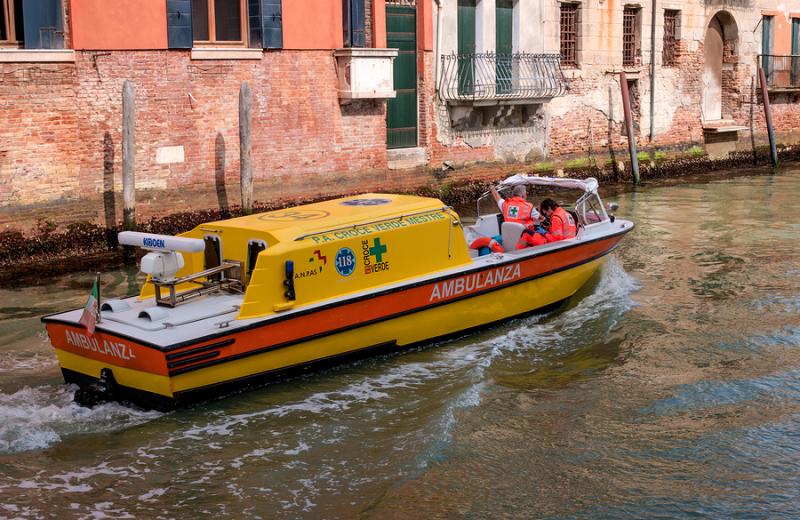When new expats imagine what their lives are going to look like in Italy, it is often a Hollywood montage flashing between scenes of fabulous meals, sunsets over terracotta-tiled rooftops, and endless glasses of wine. Life in Italy is all of that, of course, but there are also many (many) scenes that are left on the cutting-room floor of our collective daydreams: paying bills, repairing leaky faucets, or, of course, dealing with illness and accidents.
Of the many bureaucratic ducks that you need to get in a row before moving to Italy, figuring out the Italian healthcare system is one of the most important. Italy’s healthcare system is routinely ranked among the best in the world, based on its overall quality, equity of access, and the general health and life expectancy of the Italian population. That said, where the system often falls short is in efficiency and lack of clarity, and information about how to access the system can be confusing and conflicting.
Here are a few basics to help you navigate the system, even if you are sano come un pesce (healthy as a fish!):
Public healthcare
How does Italy’s healthcare system work?
Italy has nationalized health care, and every legal resident (Italian or non-) of Italy can access the system either for free or at a relatively limited cost. The National Health Service (or SSN: Servizio Sanitario Nazionale) is organized first by region and then by district within each region, and is funded through both national and regional taxes. How much each person co-pays for specific health services or medications is determined by which fascia di reddito (income bracket) he or she has declared when registering with the system.
How do I register for the SSN?
To access Italy’s healthcare system, you will need to register with the SSN in the district where you reside. Each Local Health Authority (or ASL: Azienda Sanitaria Locale) has a dedicated office or window where residents can register, and you must bring your Permit to Stay (Permesso di Soggiorno), a valid ID, your tax code (codice fiscale), and your INPS declaration. If you are employed, you will also have to bring a letter from your employer; if you are self-employed, you need to bring your Partita IVA. Once you are registered with the SSN, you will be issued a health card that has your SSN number and a bar code that you will need for any health services or medications.
I’m registered! Now what?
The first thing you need to do is choose a medico di base (general practitioner), who is your gatekeeper for basic services like check-ups, prescriptions (ricette), and referrals for specialist visits (impegnative). Your local ASL will have a list of medici di base who are taking on patients (these doctors have a limit to how many patients they can take on, and the most respected or popular doctors often have a waiting list). You can choose a doctor based on the address of their practice, or ask around to find out which have the best reputations. You are free to change your medico di base at any time by simply going to you local ASL office and requesting another doctor from the available list.
I need a doctor who speaks English….
The ASL generally does not keep a separate list of medici di base who speak English, so it may take a bit of research to find one in your district. In Italy’s main cities, the local US, UK, or Australian embassies often publish an online list of English-speaking doctors. Otherwise, in small towns, you may have to ask the local expat community. Generally, younger physicians speak quite good English, as many have studied abroad or often attend international conferences. Older doctors in small towns tend to only speak Italian.
How do I get an appointment with my medico di base?
Appointment? Sorry, almost all general practitioners work strictly on a first-come, first-serve basis...which means that you may find yourself in the waiting room for an hour or more before being seen. After you get to know your doctor, you may be able to phone in ahead of time to pick up repeat prescriptions, but generally you just need to be patient. Some doctors band together in group practices called a poliambulatorio, where either a number of medici di base or a group of specialists share an office space. In these cases, there may be a receptionist and the option of making an appointment, though how strictly each doctor sticks to his or her appointment schedule varies widely.
Like this article? Don't miss "Back to School: 10 Things You Should Know About the Italian School System"
My general practitioner won’t cut it, so how do I see a specialist?
Your medico di base is the gatekeeper for specialist visits, so first you will need to see him or her to get a referral (impegnativa). Take this and your health card to your local SSN or pharmacy, and you will be given the first available appointment for an SSN specialist and pay the co-pay (ticket). If the wait for a SSN specialist is too long, something that can often happen in larger districts where the health system may be overtaxed, you can also choose to see a specialist privately. Usually, you do not need an impegnativa to see a private specialist, but you will have to pay the service in full and out of pocket. Sometimes, there is a middle road: private clinics or specialists who will accept patients with an SSN impegnativa for the co-payment rate. In this case, patients are able to cut the waiting time while still paying a fraction of what a private service would cost.
Emergency services
What happens in an emergency?
One of the most reassuring aspects of Italy’s SSN is that emergency care is considered a right, and available to anyone in Italy whether or not they are registered in the national system. Residents have free or limited cost emergency care, and even visitors can access emergency care at a very low co-payment. If you are a resident with a health card and you have an accident or need urgent care, all you need to do is show your card upon admittance to the emergency room (pronto soccorso) or hospital (ospedale). If you are a non-resident, you will be asked for a form of ID and given a co-pay ticket, which can be paid at the ASL payment office located in every hospital or clinic.
If you need to see a doctor outside of office hours or on a holiday, but the situation is not urgent enough to merit a visit to the emergency room, you can also contact your local Emergency Medical Service (Guardia Medica). Though this service once offered house calls, today it is walk-in only in most SSN districts. Bring your health card to the local Guardia Medica office and you will be seen by a paramedic, nurse, or general practitioner who can prescribe medication, refer you to a specialist, or admit you to the hospital.
Emergency ambulance (ambulanza) and paramedic service is also covered by the SSN; you can call for an ambulance by dialing 118.
Pharmacies and medications
What about my medications?
Many medications, both over-the-counter and prescription, are also covered by the national health service and can be had for free or for a low co-payment based on your income bracket. All medications must be purchased at the pharmacy (farmacia), and you must present a prescription (ricetta) from your medico di base. Even if you have been prescribed a medication by a specialist, you must take this to your medico di base for the official ricetta that must be presented to the pharmacy.
Many pharmacies also have an ASL computer terminal where you can reserve a specialist appointment (don’t forget the impegnativa from your doctor!).
By law, every town and city in Italy must have at least one pharmacy open at night. Usually, this nocturnal service rotates weekly, so check online to see which is the farmacia di turno if you need to purchase medications after business hours or on a holiday.













